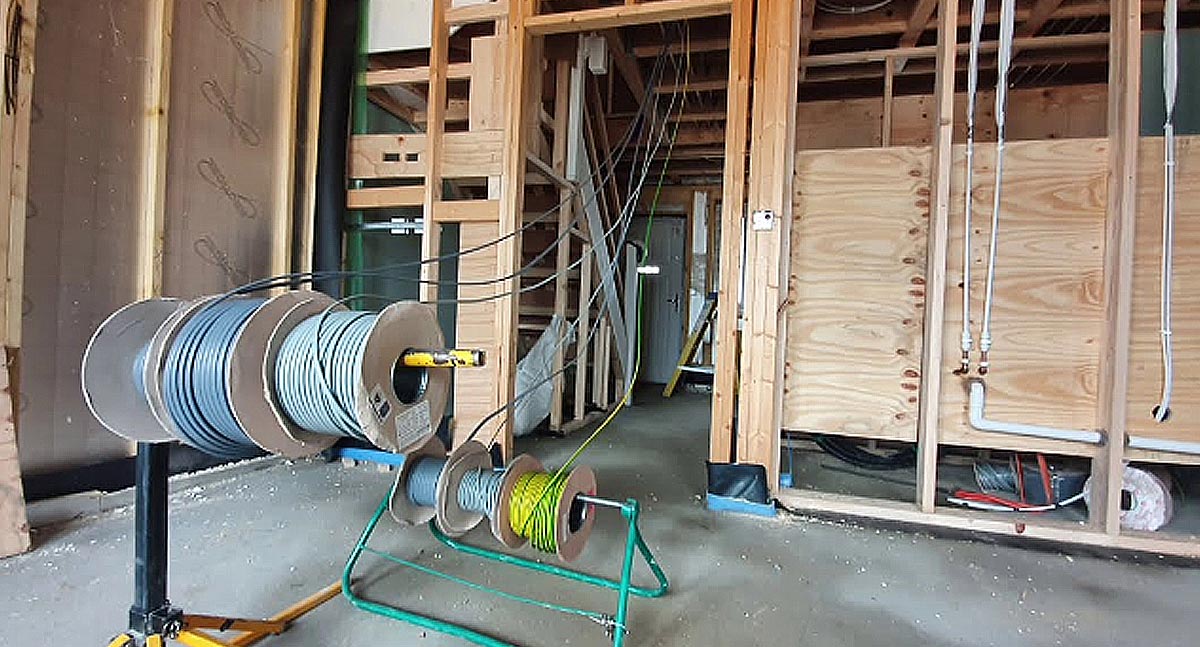The Ultimate Overview to Electric Setup: Tips and Strategies for a Safe and Efficient Home Circuitry System
In the realm of home upkeep, few elements are as crucial yet typically forgotten as the electric circuitry system. By exploring the nuances of electrical security measures and energy-saving methods, this thorough guide will certainly shed light on the complexities of home wiring, encouraging people to take cost of their family's electrical framework.
Understanding Electric Safety Steps
To make sure the safety of both individuals and residential or commercial property, understanding and implementing correct electrical precaution is paramount in any home electrical wiring job. Electrical energy is an effective pressure that can be dangerous if not managed with caution. One of the basic security procedures is guaranteeing that all electric job is performed by certified experts who comply with neighborhood structure codes and guidelines. It is important to perform a thorough assessment of the electric system before beginning any wiring project to recognize potential risks or issues that need to be addressed.
Additionally, using the ideal devices and equipment is vital for preserving security during electric installments. Insulated gloves, voltage testers, and safety glasses are a few of the standard safety gear that must be put on to prevent electrical shocks or accidents. It is also essential to de-energize circuits before functioning on them and to classify all circuits and breakers clearly to avoid confusion.

Necessary Tools for Home Wiring
Making sure the proper execution of electrical safety measures in home wiring projects entails utilizing a specific set of essential tools created to help with the installment procedure properly and securely. Some of the key tools required for home circuitry projects consist of a voltage tester for inspecting real-time wires, cable strippers for removing insulation from wires, a cord cutter for specifically cutting cables to size, a screwdriver set for securing electrical components, electric tape for insulation and safeguarding links, a cord ripper for stripping cable television sheathing, and a multimeter for determining voltage, current, and resistance.
Step-by-Step Electrical Setup Overview
Starting an electrical installment project requires meticulous preparation and adherence to safety and security guidelines. Prior to beginning any work, guarantee you have a comprehensive plan laying out the layout of the electrical system, including the placement of outlets, switches, and components. Consider the power requirements of each gadget to identify the proper wire scale and breaker sizes.
The first action in the installment process is to shut down the power supply to the area where you will be working. Utilize a voltage tester to validate that the circuits are de-energized prior to touching any wires. Next, thoroughly remove existing components or outlets and separate the cables.
When installing new wiring, run wires with wall surfaces and ceilings, safeguarding them in place with ideal fittings. Adhere to regional building ordinance and manufacturer directions for proper cord setup and connections. BRE Electrical. Make certain to label wires for easy recognition and future upkeep

Troubleshooting Common Circuitry Issues
Having actually finished the installment process as outlined in the previous subtopic, troubleshooting usual electrical wiring concerns is a necessary ability for making sure the safety and performance of your electric system. One common issue find here is a tripped breaker, usually triggered by overloaded circuits or a short circuit. To troubleshoot this, situate the breaker panel, recognize the tripped breaker by looking for the one not fully in the "on" placement, and reset it by flipping it fully to "off" and after that back to "on." Another common problem is a faulty outlet, identified by no power or intermittent power supply. Make certain the outlet is not regulated by a switch, then use a voltage tester to check for power. If there is no power, switch off the circuit, check the wiring connections for any kind of loose or broken wires, and replace the electrical outlet if essential. Constantly flickering lights can show loose electrical wiring links or an overloaded circuit. To resolve this, check and tighten up all wire links in the impacted fixtures and switches and redistribute the tons on the circuit to stabilize the electrical need. On a regular basis examining and quickly attending to these common circuitry issues will keep the safety and effectiveness of your home electric system. look at this now
Tips for Energy-saving Electric Systems
For optimum power effectiveness in electric systems, applying clever methods and using energy-saving innovations is extremely important. One crucial idea for achieving an energy-efficient electrical system is to upgrade to LED illumination. LED light bulbs consume substantially much less power than conventional incandescent light bulbs and have a longer lifespan, making them a cost-efficient choice over time. In addition, setting up programmable thermostats can help control heating and cooling systems, decreasing power waste when no person is home. Another technique is to buy energy-efficient home appliances that are ENERGY celebrity accredited, guaranteeing they fulfill high requirements for energy effectiveness. Correct insulation and sealing of windows, doors, and electric outlets can likewise avoid power loss, inevitably lowering the workload on electrical systems. Last but not least, think about integrating sustainable power sources like solar panels to further decline dependence on conventional power grids. By integrating these energy-efficient pointers and technologies, house owners can not just save money on their electrical energy costs yet likewise lower their environmental influence.
Conclusion
Finally, implementing correct precaution, utilizing necessary tools, following a step-by-step installation guide, repairing usual issues, and including energy-efficient tips are crucial for a safe and efficient home circuitry system. By sticking to these methods, property owners can guarantee the longevity and performance of their electrical setups. It is essential to prioritize security and efficiency when it concerns electric work in order to avoid potential hazards and to keep a dependable electric system in the home.